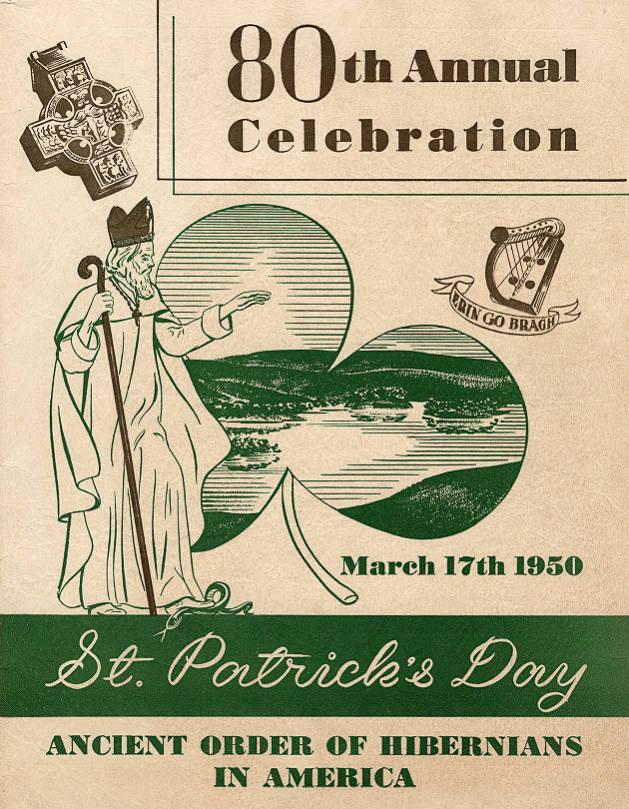The Ancient Order of Hibernians is a National Irish Catholic organization that was founded in New York in 1836. The first Indianapolis division (chapter) formed, according to tradition, on St. Patrick’s Day, March 17, 1870. Its purpose was to provide “mutual support in sickness and distress” and to advance the principles of Irish nationality.

To be eligible to join, a male had to be of background and a practicing Catholic. Bishop , however, banned the wearing of the order’s regalia in church (1882) because the Hibernians sponsored fundraising dances. He lifted the ban during the Hibernians’ national convention in Indianapolis in 1908.
Despite the existence of several other local Irish societies, the Hibernians experienced impressive growth. Two divisions were organized by 1874, four by 1877. In the early 1920s, county headquarters in Morrison Hall coordinated 5 divisions of men and 10 auxiliary divisions of women. Probably the most important annual parade and program marked St. Patrick’s Day, 1923, at which Hibernians publicly protested the religious intolerance fostered by the .
The order dwindled to two active men’s divisions and a women’s auxiliary during the Great Depression (1932) and no longer sponsored a parade. Then on October 28, 1958, Irish-born James J. Heneghan organized the Kevin Barry Division No. 3. Named for an Irish martyr, the division continues to celebrate and promote Irish Catholic culture in Indianapolis and Indiana. It is one of the largest in the United States.
In 1980, the Kevin Barry Division helped reintroduce the annual St. Patrick’s Day parade and program. In conjunction with the Irish American Heritage Society, it erected an ornate limestone Celtic cross at in 1990 in memory of Indiana’s Irish immigrants, and in 2001 the division dedicated a monument to the first Irish Regiment of Indiana, the 35th Volunteer Infantry. The memorial, reminiscent of an ancient Irish Dolmen of two stones, reads: “1st Irish of Indiana 35th Volunteer Infantry in faithful remembrance of the sacrifices by the sons of Erin in the War for the Union 1861 – 1865.” The organization also grants scholarships to deserving young people and recognizes local Irish American leaders.
FURTHER READING
- Ancient Order of Hibernians. “AOH History.” https://aohindy.com/who-we-are/aoh-history/.
CITE THIS ENTRY
APA:
Divita, J. J. & Murray K. C. (2021). Ancient Order of Hibernians. Encyclopedia of Indianapolis. Retrieved Dec 5, 2025, from https://indyencyclopedia.org/ancient-order-of-hibernians/.
MLA:
Divita, James J. and Kevin C. Murray. “Ancient Order of Hibernians.” Encyclopedia of Indianapolis, 2021, https://indyencyclopedia.org/ancient-order-of-hibernians/. Accessed 5 Dec 2025.
Chicago:
Divita, James J. and Kevin C. Murray. “Ancient Order of Hibernians.” Encyclopedia of Indianapolis, 2021. Accessed Dec 5, 2025. https://indyencyclopedia.org/ancient-order-of-hibernians/.

Help improve this entry
Contribute information, offer corrections, suggest images.
You can also recommend new entries related to this topic.